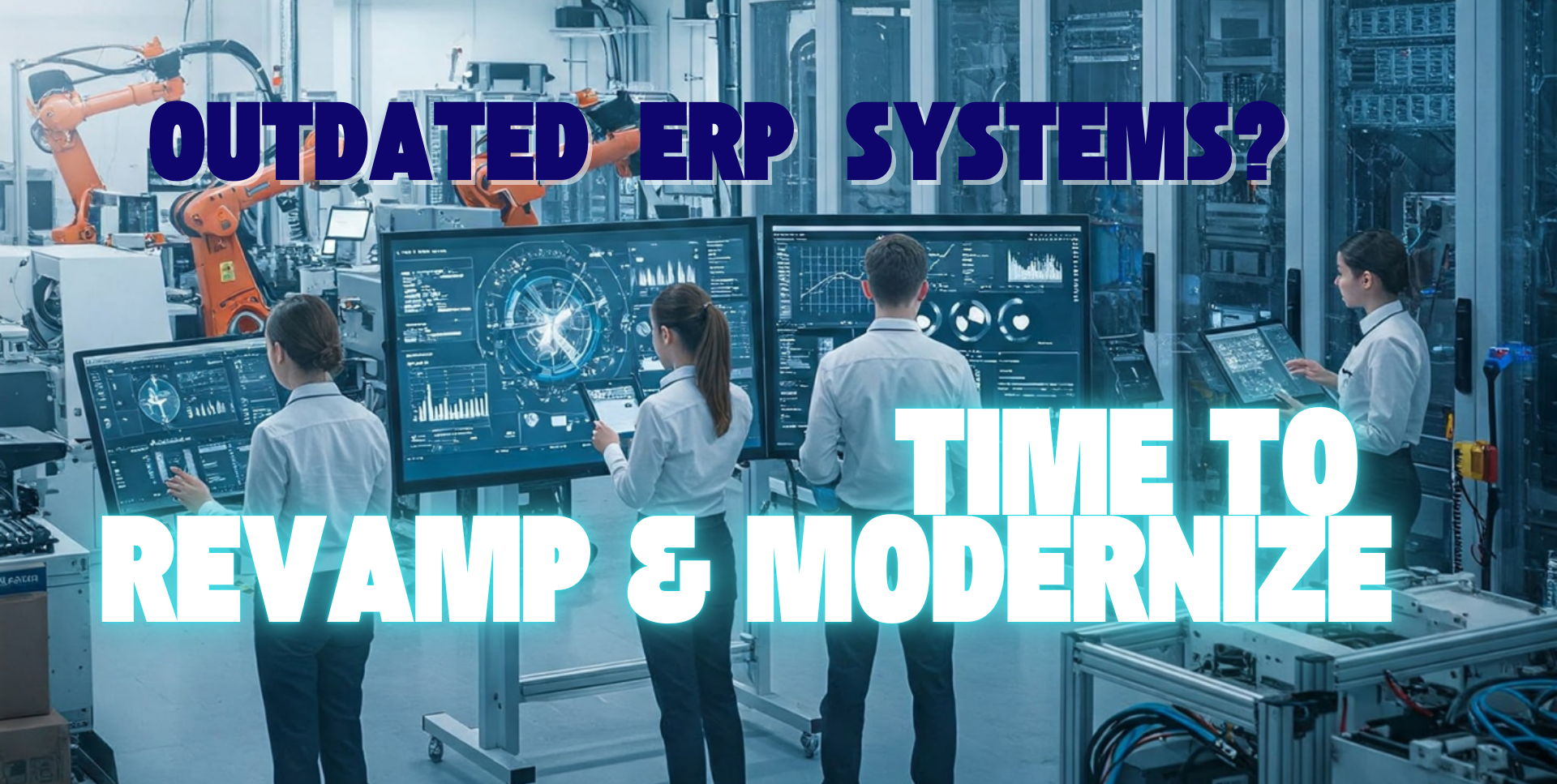
For manufacturers and other large businesses, an Enterprise Resource Planning (ERP) system is the backbone of operations, managing everything from supply chain logistics and inventory to scheduling and compliance. A well-functioning ERP increases efficiency, reduces costs, and improves decision-making.
However, if your ERP is over a decade old, it may be limiting your growth instead of supporting it. Legacy ERPs often struggle to keep pace with modern demands, leading to inefficiencies, security risks, and higher operational costs. But no worries! We have you covered! Here’s how to recognize the warning signs and what you can do to revamp your system, before it hurts your bottom line
Signs Your Legacy ERP is Holding You Back
Frequent Downtime & System Lag
- Slow load times and crashes disrupt productivity and revenue.
Limited Integration with Modern Technology
- Older ERPs don’t sync well with automation, IoT, or cloud-based applications, forcing
employees to manually input data instead of leveraging real-time automation.
Poor Scalability & Increasing Costs
- Legacy systems were built for past business models and struggle to grow with your
operations. - Maintaining outdated software drains IT resources and requires costly patches,
hardware, and workarounds.
Security & Compliance Risks
- Outdated security leaves your business vulnerable to ransomware and data breaches.
- Compliance with regulations like CMMC, NIST, and ITAR becomes challenging when
your ERP can’t generate accurate reports or enforce data protections.
Employee Frustration & Productivity Loss
- A slow, outdated system leads to workarounds, inefficient reporting, and reduced
morale. - If employees avoid using your ERP or spend excessive time troubleshooting it, it’s no
longer an asset—it’s a liability.
The Hidden Costs of an Outdated ERP
- Lost Productivity – Time wasted on manual processes and troubleshooting.
- Slower Decision-Making – Lack of real-time data delays critical business decisions.
- Increased Errors – Legacy ERPs increase risks of inventory mistakes, shipment delays, and
compliance failures. - Cybersecurity Threats – Older systems are prime targets for cybercriminals, risking data
breaches and operational shutdowns.
How to Modernize Your ERP and Future-Proof Your Business
Assess If It’s Time for an Upgrade
- Conduct a performance audit to measure system speed, downtime frequency, and user
feedback. - Compare the long-term costs of maintaining your current ERP vs. transitioning to a
modern solution.
Consider a Cloud-Based ERP
- Cloud ERPs offer real-time data access, enhanced security, automation, and
scalability. - Moving away from on-premise infrastructure reduces IT maintenance costs while
ensuring your system stays up to date with automatic updates.
Enhance Integration with Modern Solutions
- If a full ERP replacement isn’t feasible, API solutions can connect your legacy ERP with
cloud-based apps, AI, and smart manufacturing tools.
Strengthen Cybersecurity Measures
- Implement multi-factor authentication (MFA), encryption, and access controls to
secure ERP data. - Regular system updates and patches are crucial for preventing vulnerabilities.
Work with an IT Partner for a Smooth Transition
- KRS IT Consulting specializes in helping NJ manufacturers upgrade their ERP systems
without disrupting production. - Whether integrating new technologies, securing data, or transitioning to a cloud ERP,
expert guidance ensures a seamless transformation
Don’t Let an Outdated ERP Limit Your Business Growth
An ERP should be an engine for efficiency and innovation—not a bottleneck. If your system is
causing delays, security risks, or inefficiencies, it’s time to explore a modern solution. Upgrading
your ERP can unlock scalability, automation, and smarter decision-making to drive your
business forward.
- Call KRS IT Consulting at 201-402-1900 for your free assessment.
- Visit: www.krsitconsulting.com, where you can always learn how we help your businesses
modernize their IT infrastructure.

